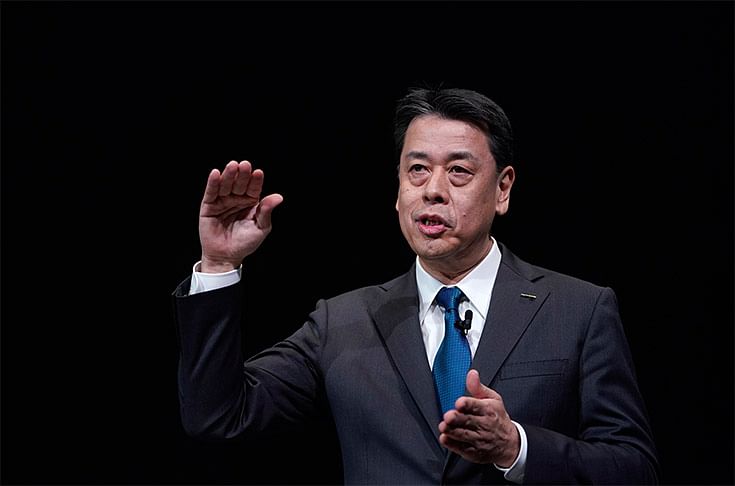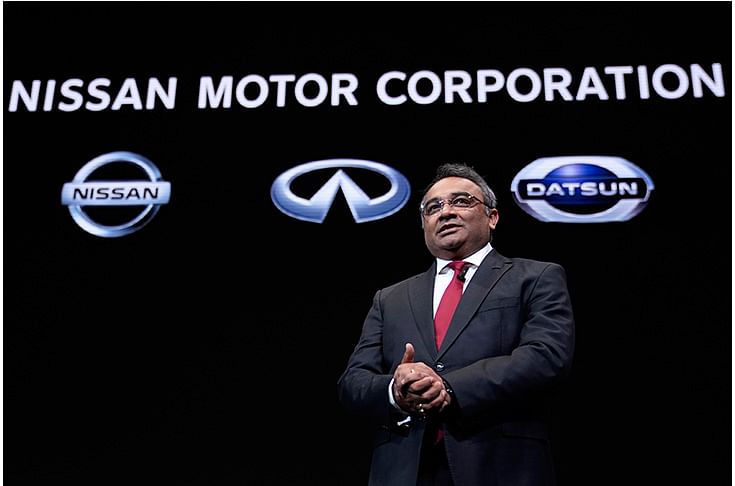Nissan’s new leadership team lines up major steps to build a sustainable business
Reduction of annual production capacity from 7.2 million units to 5.4 million units by March 2024, is one of the key steps announced.
“Our pathway to recovery will not be a smooth one. But Nissan is blessed with extremely talented employees. We are working together to overcome the crisis,” says Makoto Uchida, CEO, Nissan Motor Corporation as he closes his presentation of the new 4-year business plan for Japan’s third largest carmaker.
Reduction of annual production capacity from 7.2 million units to 5.4 million units by March 2024, is one of the key steps announced today. This will include closing down its plants in Indonesia and Barcelona.

Nissan will also stop sales in the South Korean market, while the Datsun brand will be withdrawn from Russia. Datsun will remain in India, at least for now.
The key targets
A set of key targets for the mid-term plan is to reduce the average age of Nissan’s model portfolio to less than four years from the level of over five years now. With a younger fleet of models the OEM aims to enhance its global market share to six percent, from the current level of 5.8 percent. The target is still below Nissan’s ‘Power 88’ mid-term plan in 2011 under which it aimed to achieve a market share of 8 percent, and operating profit margin of 8 percent. Much has changed in the automotive industry, and within Nissan, and times have changed too. That may explain the current targets.
The OEM now aims to achieve a five percent operating margin by March, 2023. Enhancing average plant utilisation level to 80 percent and reducing the number of loss making/less profitable models are aimed to contribute to that goal. Nissan says the number of models in its portfolio will be brought down from the current 69 to less than 55.
The plan of action
Struggling with an ageing model portfolio, management shakeup, and now the Covid-19 pandemic, Nissan is going through one of its worst phases. It has posted a loss of US$6 billion (Rs 45,000 crore) in the year ending March 31, 2020. Uchida says the recovery plan will be based on two key pillars:
1) Business rationalisation
2) Prioritisation and focus
His approach is different from his predecessor Carlos Ghosn, who betted more on expansion, globalisation.
Nissan’s press release states, ‘The scalable plan, involving cost-rationalisation and business optimisation, will shift the company’s strategy from its past focus on inflated expansion’. “Excessive sales push or expansion is not what we are going to pursue,” says Uchida. India is one of the countries that Nissan expanded business to, under the leadership of Ghosn. He also resurrected the Datsun brand, with India being the first market followed by South Africa, Indonesia and Russia.
As part of the four-year plan, Nissan will take decisive action to transform its business by streamlining unprofitable operations and surplus facilities, alongside structural reforms. The market share and financial targets include proportionate contributions from its 50 percent equity joint venture in China.

Makoto Uchida, Nissan chief executive officer, said: “We will now concentrate on our core competencies and enhancing the quality of our business, while maintaining financial discipline and focusing on net revenue per unit to achieve profitability.
The Nissan recovery plan
This coincides with the restoration of a culture defined by “Nissan-ness” for a new era.” The actions under the two broad pillars on which the recovery plan is based, are:
1) Rationalisation: robust actions to restructure, reduce costs and improve efficiency
- Right-sizing Nissan’s production capacity by 20 percent to 5.4 million units a year under the assumption of a standard shift operation
- Achieving plant utilisation rate above 80 percent, making operations more profitable
- Rationalising the global product line-up by 20 percent (from 69 to fewer than 55 models)
- Reducing fixed costs by approximately 300 billion yen
- Intend to close Barcelona plant in Western Europe
- Consolidating North American production around core models
- Closure of manufacturing facility in Indonesia and concentrating on Thailand plant as single production base in ASEAN
- Alliance partners to share resources, including production, models, and technologies
2) Prioritising core markets and core products
- Focusing Nissan’s core operations in the markets of Japan, China and North America
- Leveraging the Alliance assets to maintain Nissan’s business at appropriate operational level in South America, ASEAN and Europe
- Exiting South Korea, the Datsun business in Russia and streamlining operations in some markets in ASEAN
- Focusing on global core model segments including enhanced C and D segment vehicles, electric vehicles, sport cars
- Introduce 12 models in the next 18 months
- Expanding presence in EVs and electric-motor-driven cars, including e-POWER, with more than 1 million electrified sales units expected a year by end of FY2023
- In Japan, launching two more electric vehicles and four more e-POWER vehicles, increasing electrification ratio to 60% of sales
- Introducing ProPILOT advanced driver assistance system in more than 20 models in 20 markets, targeting more than 1.5 million units to be equipped with this system per year by the end of FY23.
The USA will be a major focus market for Nissan to power its mid-term plan. 8 models will be offered over the next 28 months in that market. A new management team will also be in charge of the market, by June 15.

"Nissan is still not where it should be in the US,” says Ashwani Gupta, COO, Nissan Motor Corporation. Nissan’s marginal presence in the India market meant the country didn’t find any mention in the mid-term plan announcement. However, some efforts are expected by the Japanese OEM here soon. Key among them will be a new SUV.
The new ‘transformation plan’ is one in a series of business plans in the 87 year old OEM’s history, but the first for the current leadership team. Could the company’s fortune take a new shape hereon?
RELATED ARTICLES
Autoliv Plans JV for Advanced Safety Electronics With China’s HSAE
The new joint venture, which is to be located strategically near Shanghai and close to several existing Autoliv sites in...
JLR to Restart Production Over a Month After September Hacking
Manufacturing operations at the Tata Group-owned British luxury car and SUV manufacturer were shut down following a cybe...
BYD UK Sales Jump 880% in September to 11,271 units
Sales record sets the UK apart as the largest international market for BYD outside of China for the first time. The Seal...






 28 May 2020
28 May 2020
 6422 Views
6422 Views





 Ajit Dalvi
Ajit Dalvi




